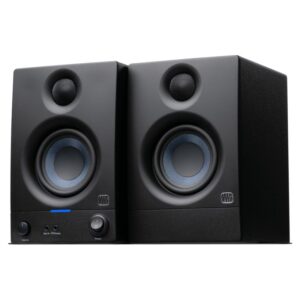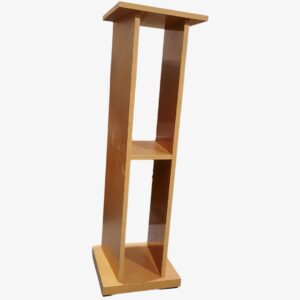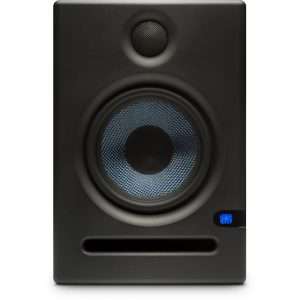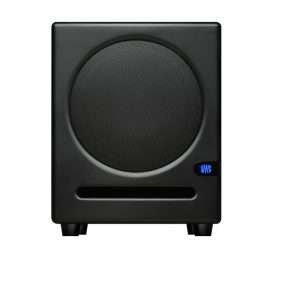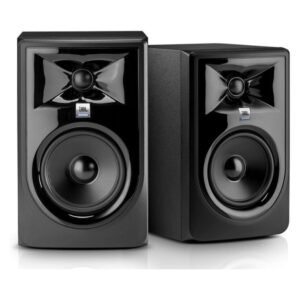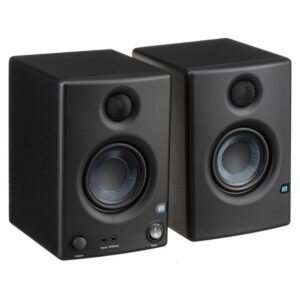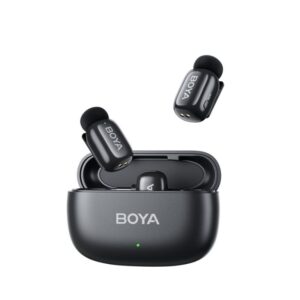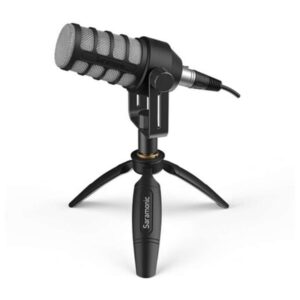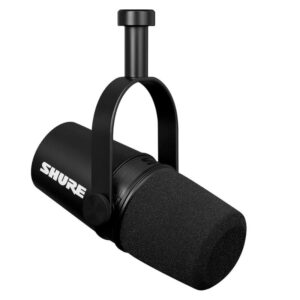Description
The Behringer TRUTH B2030A is a classic and highly regarded active (powered) studio monitor, part of Behringer’s long-running “TRUTH” series. It’s known for offering a remarkably linear frequency response and neutral sound reproduction for its price point, making it a popular choice for home and project studios. Unlike some newer Behringer models (like the NEKKST series with Keith Klawitter’s involvement), the B2030A has its own distinct design and history.
It’s typically sold as a single unit, and for stereo monitoring, you would purchase a pair.
Key Features and Highlights:
- 6.75-inch Polypropylene Woofer: The B2030A features a 6.75-inch long-throw woofer with a special polypropylene diaphragm and a deformation-resistant aluminum die-cast chassis. Polypropylene is chosen for its lightweight and rigidity, contributing to accurate bass response and clear midrange.
- 0.75-inch Ferrofluid-Cooled Dome Tweeter: It’s equipped with a 0.75-inch ultra-high resolution ferrofluid-cooled dome tweeter. Ferrofluid cooling helps dissipate heat from the voice coil, improving power handling and ensuring consistent performance, especially during long sessions.
- Bi-Amplified Design (Class AB): The B2030A uses a true bi-amplified design, meaning separate amplifiers power the woofer and tweeter. This provides optimal power delivery and minimizes distortion.
- Total Power: 125 Watts (peak) / 110 Watts (RMS) per monitor. This power is split, typically with 75 Watts for the LF driver and 35 Watts for the HF driver, providing ample headroom.
- Front-Ported Bass Reflex Cabinet: The cabinet features a front-firing bass port. This design is advantageous for placement, as it allows the monitors to be positioned closer to walls without causing excessive bass buildup, unlike rear-ported designs. The cabinet itself is made from low-vibration E1 MDF (Medium Density Fiberboard) for acoustic integrity.
- Advanced Waveguide Technology: Behringer incorporated its “unique wave guide technology” around the tweeter. This design aims to provide controlled dispersion characteristics and an extremely large “sweet spot,” allowing for more flexibility in listening position without losing crucial stereo imaging and detail, and reducing listening fatigue.
- Extensive Room Adjustment Controls: A major selling point of the TRUTH series monitors is their comprehensive set of rear-panel switches for acoustic compensation, allowing you to tailor the monitor’s response to your specific room acoustics:
- Low Frequency Response Switch: Helps fine-tune the low-end.
- Low Frequency Room Compensation Switch: Designed to reduce exaggerated bass due to proximity to walls or corners. It has multiple settings to optimize for different placements.
- High Frequency Response Switch: Allows adjustment of the high-end to match room characteristics or personal preference.
- Mute Switches (Low Speaker / High Speaker): Some versions include switches to mute individual drivers for troubleshooting or analysis.
- Input Sensitivity Trim: A gain control knob for adjusting the input level.
- Servo-Balanced Inputs: Features professional servo-balanced inputs on both XLR and 1/4″ TRS connectors. This ensures high signal integrity and compatibility with a wide range of audio equipment.
- Frequency Response: Offers an ultra-linear frequency response from 50 Hz to 21 kHz. This range provides a very accurate representation of most audio material, with a respectable low-end for its driver size.
- High Max SPL: Capable of a maximum sound pressure level of 113 dB SPL @ 1m (for a pair), meaning they can play quite loud without distorting, providing good headroom for mixing.
- Magnetic Shielding: Allows for placement near computer monitors without causing interference.
- Overload Protection: Includes separate, integrated limiting circuits for both low and high-frequency overload protection.
- Matched Pairs: Behringer often emphasizes that TRUTH monitors are delivered as “matched pairs” with individual frequency diagrams, ensuring consistent performance between the left and right speakers.
Who is the Behringer TRUTH B2030A for?
- Home and Project Studio Owners: Excellent for those setting up or upgrading their monitoring, offering professional features and sound at an affordable price.
- Music Producers and Mix Engineers: Provides a neutral and honest reference for mixing, allowing for mixes that translate well to other playback systems.
- Voiceover Artists & Podcasters: For clear and accurate monitoring of spoken word.
- Students and Budget-Conscious Professionals: A cost-effective way to get into serious studio monitoring.
- Anyone needing a highly adaptable monitor: The extensive room compensation controls are a major benefit for less-than-ideal acoustic environments.
Considerations:
- Sound Profile: While designed for neutrality, some users might describe its high-end as slightly “bright” or “forward” compared to some more expensive monitors. However, this can often be beneficial for revealing mix issues and can be tamed with the HF response switch.
- Age of Design: The B2030A has been around for many years. While its core design is solid, newer monitors might incorporate more advanced materials or DSP for even greater precision, though often at a higher cost.
- Bass Depth (for 6.75″): While the 6.75-inch woofer provides solid bass, for genres with extremely deep sub-bass content (below 50-60 Hz), a dedicated subwoofer (like Behringer’s own B2092A TRUTH Subwoofer) would be a valuable addition for truly accurate low-end translation.


















